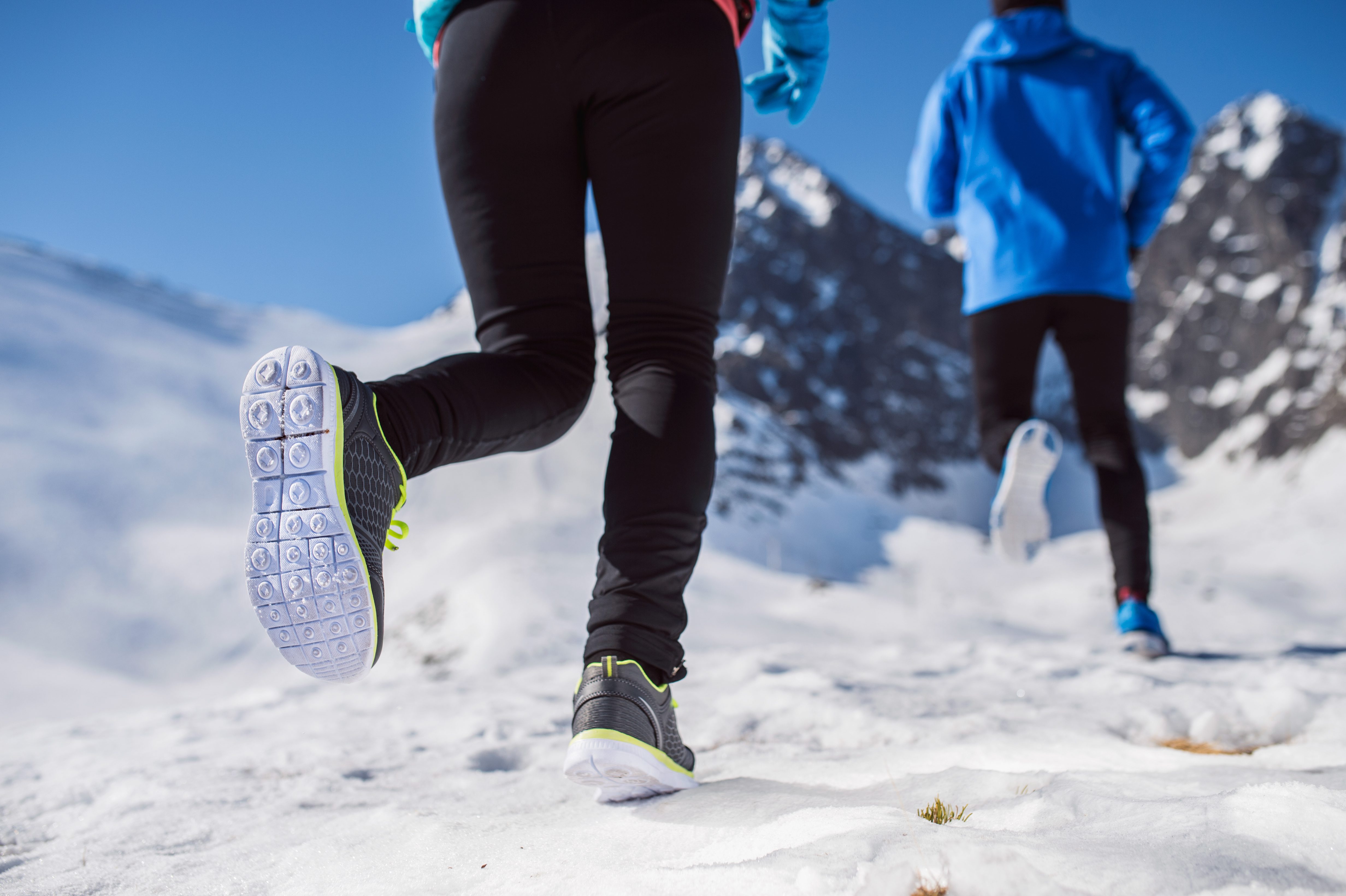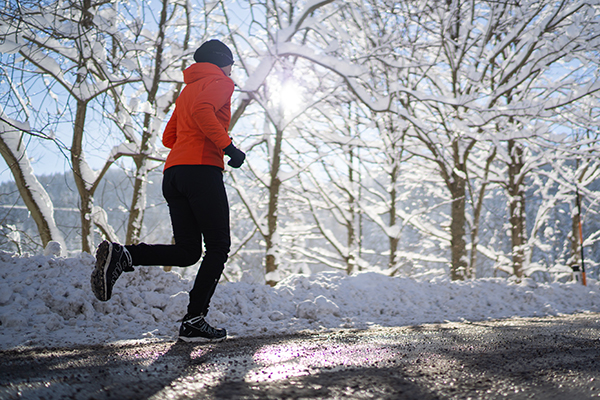Understanding the Impact of Cold Weather on Running Performance
Cold weather can significantly affect the human body, making it challenging to maintain usual running performance. The question “is it harder to run in cold weather?” is a common concern for many runners. The answer is yes, and it is essential to understand the reasons behind this difficulty to adapt accordingly.
When temperatures drop, the body’s core temperature decreases, causing the blood vessels to constrict to conserve heat. This constriction reduces the amount of oxygen-rich blood flowing to the muscles, which can lead to reduced lung function and increased heart rate. As a result, runners may experience shortness of breath, making it more challenging to maintain a consistent pace.
Moreover, cold weather can cause muscle elasticity to decrease, making muscles stiffer and less flexible. This stiffness can lead to a higher risk of injury and a decrease in running efficiency. To counteract these effects, it is crucial to adapt running technique and prepare the body for cold weather running.
How to Adapt Your Running Technique for Cold Weather
To ensure optimal performance when running in cold weather, it is essential to adapt your running technique. By making some necessary adjustments, you can minimize the impact of cold temperatures on your body and maintain your running efficiency.
Firstly, proper clothing choices are crucial. Dressing in layers allows you to regulate your body temperature and wick away moisture, preventing hypothermia and frostbite. Start with a moisture-wicking base layer, followed by an insulating mid-layer, and finish with a waterproof and windproof outer layer. Don’t forget to cover your head, hands, and feet, as they are prone to heat loss.
Warming up before running is also essential in cold weather. A proper warm-up routine increases blood flow to the muscles, reducing the risk of injury and improving running efficiency. Start with a brisk walk or light jog, followed by dynamic stretches that mimic the movements of running. Gradually increase your pace and intensity, allowing your body to adjust to the cold temperatures.
Finally, adjusting your pacing strategies is crucial when running in cold weather. Cold air is denser than warm air, making it harder to breathe. Start with a slower pace and gradually increase it as your body adjusts to the cold temperatures. Additionally, be aware of your surroundings and adjust your pace accordingly to avoid icy surfaces or other hazards.
The Role of Nutrition and Hydration in Cold Weather Running
Proper nutrition and hydration are essential for optimal running performance, especially in cold weather. When running in cold temperatures, the body requires more energy to maintain its core temperature, making it crucial to consume enough calories to fuel your runs.
Start by consuming a balanced diet rich in carbohydrates, proteins, and healthy fats. Carbohydrates provide the body with quick energy, while proteins help repair and build muscle tissue. Healthy fats, such as those found in nuts, seeds, and avocados, provide sustained energy and help keep the body warm.
Additionally, the cold weather can affect fluid loss, making it essential to stay hydrated. While it may be less apparent in cold weather, dehydration can still occur, leading to decreased performance and increased risk of injury. Aim to drink at least 16 ounces of water or a sports drink before your run and rehydrate regularly throughout your run.
It is also essential to consume enough electrolytes, as they help regulate fluid balance and muscle function. Sports drinks, energy gels, and electrolyte-rich foods, such as bananas and nuts, can help replenish electrolytes lost through sweat.
Gearing Up: Selecting the Right Cold Weather Running Gear
Running in cold weather can be challenging, but having the right gear can make all the difference. Selecting appropriate clothing, footwear, and accessories can help keep you warm, dry, and comfortable, allowing you to focus on your run.
Start with a moisture-wicking base layer that pulls sweat away from your skin, keeping you dry and warm. Avoid cotton, as it retains moisture and can leave you feeling chilled. For your mid-layer, choose a warm and insulating fabric, such as fleece or down. Finally, opt for a waterproof and windproof outer layer that protects you from the elements and keeps you dry.
Don’t forget about your extremities, as they are prone to heat loss. Wear warm socks, gloves, and a hat or headband to keep your head and ears warm. Consider using hand and foot warmers for added warmth and protection.
When it comes to footwear, look for shoes with good traction and stability to navigate slippery surfaces. Consider using trail shoes or shoes with added grip to prevent falls and injuries. Additionally, consider using gaiters to keep snow and debris out of your shoes and socks.
Accessories such as a hydration pack or belt can help keep you hydrated during your run. Reflective gear and lights can also enhance visibility and safety during low-light conditions.
Preventing Injuries in Cold Weather Running
Running in cold weather can increase the risk of injury due to factors such as reduced lung function, increased heart rate, and altered muscle elasticity. However, by taking some precautions, you can minimize the risk of injury and enjoy a safe and successful run.
Start by properly warming up before your run. A dynamic warm-up that includes movements such as lunges, leg swings, and arm circles can help increase blood flow and prepare your muscles for exercise. Gradually increase your pace and intensity, allowing your body to adjust to the cold temperatures.
When running in cold weather, it is essential to adjust your pacing strategies. Cold air is denser than warm air, making it harder to breathe. Start with a slower pace and gradually increase it as your body adjusts to the cold temperatures. Additionally, be aware of your surroundings and adjust your pace accordingly to avoid icy surfaces or other hazards.
Proper cool-down routines are also crucial in preventing injuries. After your run, gradually decrease your pace and incorporate static stretches to help reduce muscle tension and soreness. Additionally, consider using a foam roller or massage ball to release any tight muscles or knots.
Finally, be mindful of the surfaces you are running on. Avoid running on icy or slippery surfaces, as they can increase the risk of falls and injuries. Instead, opt for cleared and salted paths or trails, or consider running on a treadmill if conditions are unsafe.
Staying Motivated: Overcoming the Mental Challenges of Cold Weather Running
Running in cold weather can be mentally challenging, but there are strategies you can use to stay motivated and enjoy your runs. By setting goals, finding a running partner, and incorporating variety into your running routine, you can overcome the mental barriers of cold weather running.
Start by setting specific and achievable goals for your runs. This can help provide motivation and a sense of accomplishment, even on the coldest days. Consider signing up for a race or setting a personal distance or time goal to help keep you motivated.
Finding a running partner can also help keep you motivated and accountable. Running with a friend or group can provide a social aspect to your runs and help make the time go by faster. Additionally, having someone to run with can help increase safety and provide a sense of security during low-light conditions.
Incorporating variety into your running routine can also help keep things interesting and prevent boredom. Consider mixing up your routes, trying new trails, or incorporating different types of runs, such as intervals or hill repeats. Additionally, consider cross-training activities, such as swimming or cycling, to help keep your workouts fresh and engaging.
Finally, remember to be kind to yourself and celebrate your accomplishments. Running in cold weather can be challenging, both physically and mentally. Acknowledge your efforts and progress, and don’t be too hard on yourself if you have an off day. By focusing on the positive aspects of your runs and staying motivated, you can successfully navigate cold weather running and enjoy all the benefits that come with it.
Cold Weather Running: Balancing Risk and Reward
Running in cold weather can be challenging, but it also comes with numerous benefits. By understanding the potential risks and rewards, you can make informed decisions about your cold weather running routine and stay safe while reaping the rewards of regular exercise.
One of the primary benefits of cold weather running is the increased calorie burn. When running in cold weather, your body has to work harder to maintain its core temperature, leading to an increased calorie burn. Additionally, running in cold weather can help boost your mood and immune system, providing a mental and physical boost during the winter months.
However, there are also potential risks associated with cold weather running, such as overexertion and hypothermia. Overexertion can occur when your body works too hard to maintain its core temperature, leading to fatigue, dizziness, and even fainting. Hypothermia, on the other hand, occurs when your body loses heat faster than it can produce it, leading to a dangerously low body temperature.
To balance the risks and rewards of cold weather running, it is essential to take proper precautions and listen to your body. Dress appropriately for the weather, staying warm and dry, and avoid overexertion by pacing yourself and taking regular breaks. Additionally, be aware of the signs of hypothermia, such as shivering, exhaustion, and confusion, and seek medical attention if necessary.
By taking these precautions and understanding the potential risks and rewards, you can enjoy the benefits of cold weather running while staying safe and healthy. Remember to listen to your body, take proper precautions, and enjoy the unique challenges and rewards of running in chilly conditions.
Real-World Examples: Success Stories from Cold Weather Runners
Running in cold weather can be challenging, but many runners have successfully navigated the chilly conditions and achieved their goals. Here are some inspiring stories of runners who have braved the cold and come out on top.
One such runner is Sarah, a marathoner who trains in the cold winters of Minnesota. She recommends investing in high-quality cold weather running gear, such as thermal leggings and a windproof jacket, to stay warm and dry. She also emphasizes the importance of proper hydration and nutrition, increasing her caloric intake and carrying water with her on longer runs.
Another successful cold weather runner is John, who trains for ultramarathons in the snowy mountains of Colorado. He stresses the importance of proper pacing and avoiding icy surfaces, as well as incorporating variety into his running routine to keep things interesting. He also recommends finding a running partner or group to help stay motivated and accountable during the winter months.
Finally, there’s Emily, a runner who has completed multiple marathons in freezing temperatures. She emphasizes the importance of proper warm-up and cool-down routines, as well as listening to her body and adjusting her pacing strategies as needed. She also recommends incorporating cross-training activities, such as yoga or strength training, to help build endurance and prevent injury.
By following the tips and strategies of these successful cold weather runners, you too can brave the chilly conditions and achieve your running goals. Remember to stay motivated, listen to your body, and take proper precautions to stay safe and healthy during your cold weather runs.





